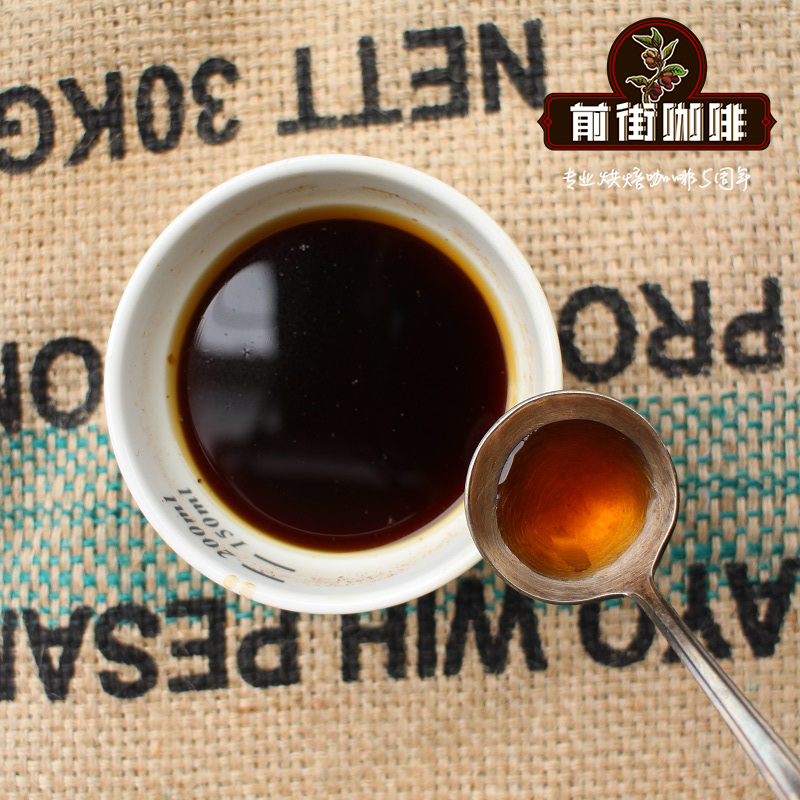The difference between Columbia Huilan and Na Linglong. How much is a cup of Columbia Linglong coffee?

Professional coffee knowledge exchange more coffee bean information please follow the coffee workshop (Wechat official account cafe_style)
To the west of Colombia is the Andes, which is divided into three parts: the western, central and eastern mountains. The Cauca and Magdalena rivers flow along the Caribbean to the lowland plains.
Colombia, currently the world's third largest coffee producer, uses washing to treat Arabica coffee beans. It is also one of the largest producers of high-quality coffee in the world. Traditional deep-roasted coffee has a strong and memorable flavor. Coffee was first introduced to Colombia in 1808, when it was brought by a priest from French Antilles via Venezuela. Today, the country is the third largest coffee producer after Brazil and Vietnam, with an annual output of 12 million bags of 60 kg each, while Brazil produces 31 million bags a year. The status of coffee in Colombia can be seen in the following examples: all vehicles entering the country must be sprayed and sterilized so as not to inadvertently cause disease and damage coffee trees.
The main producing areas are Huila (San Augustin), Narino, Tolima, Popayan (Cauca), Valle de Cauca, Meta, Antioquia (Medellin), Magdelena (Sierra Nevada), Boyaca, Santander (Bucaramanga) and so on. About 700 million coffee trees are documented in Colombia, 66% of which are planted in modern plantations and the rest in small, traditionally run farms. The main varieties include Kaddura Caturra, Colombia Colombia, Tibica Tipica, Bourbon Bourbon, Elephant Bean Maragogype, and Tabi. Farms and cooperatives throughout the country, big or small, are distributed in more than 500000 municipalities and 14 major coffee-producing areas. A total of 2 million Colombians depend on coffee cultivation for a living, contributing 12.5 per cent to gross domestic product. High-grade Colombian coffee beans grow in the Andes Mountains at an altitude of 1200 to 2000m, and are planted between banana trees and rubber trees to provide shade for coffee trees.
Colombian coffee farmers can sell all their products to the Coffee Management Association at an official low price or to exporters, who may offer higher prices. In fact, the Coffee Management Association controls overall exports to Europe, while coffee to the United States is mainly exported through private exporters, however, all exports are controlled by the lowest export price.
Narino province is located in the southwest of Colombia, the whole territory is located in the highest region of Colombia, the provincial capital San Juan de Pasto borders Ecuador (Ecuador) and faces the Pacific Ocean. Coffee cultivation is a very important economic pillar for Nalinglong province. Traditionally, the planting area of small coffee farmers is less than one hectare.
Most of the coffee growing areas in the province are alpine terrain belonging to the Andes, remote mountains, steep mountains, blown by the Pacific sea breeze, the provincial capital San Juan de Pasto. At the same time, Narino province is also one of the important coffee producing areas in Colombia. although its planting area is the smallest of the 14 large producing areas, the whole territory has the natural environmental conditions of special valley microclimate, so the coffee produced is of the best quality and has been known as the "Holy Grail of the Pope" since ancient times. The raw beans planted on the cloud belt near the Ecuadorian border, about 1600-2300 meters above sea level, have excellent environment, fertile soil, careful and complicated harvesting and treatment procedures, and extremely high quality.
Colombian coffee is widely sold among many producing countries, ranking the third largest in the world (the first is Brazilian coffee and the second is Vietnamese coffee). The main factor is that active volcanic activity has created the most fertile soil in the world. grow coffee beans that are sweet, rich, very pleasing and easy to brew successfully Whether it is simple black coffee or a variety of Colombian coffee formula coffee is a good choice. In recent years, Colombian coffee has broken away from the old impression that it can only be used as a base coffee because of a coffee competition that has increased farmers' income. before that, it was regarded as commercial Dazong beans or base formula beans less alone to become boutique coffee.
Most of the Colombian coffee species are Caturra, and the estates will be mixed with some Typica, Buorbon, etc. Almost all administrative regions have excellent producing areas and estates. About 500000 people in Colombia are engaged in coffee production and surrounding work, and 75% of the coffee is exported to countries around the world. After more than 10 years of research and development, Colombia's unique water washing method has reduced water consumption by 95% and reduced pollution by 90%. Not only maintain the ecology of nature, but also make coffee beans a little more changes to increase the sense of hierarchy.
The southern Narino coffee producing area near Ecuador has a good reputation for producing the Holy Grail used by the Vatican and is also the favorite producing area of the world's largest coffee chain. Most of the coffee it buys rarely appears on the market. Raw bean merchants appear in the market only through direct transactions or a few high-quality coffee estates, but that is also very few. Model Sang Manor (Reversal Del Patron) is the best coffee in Nalinglong, with few defective beans and the same particle size of about 18 mesh. The round, smooth, sapphire-shaped beans are much more even and beautiful than the average Colombian coffee.
Nalinglong coffee beans actually taste:
The dry aroma after grinding has obvious Zhenguo chocolate and a hint of milk aroma, while the wet aroma after brewing will show the sweetness of milk chocolate. after sipping, the taste is smooth, and the sweetness of milk chocolate is obviously layered, accompanied by a slightly sweet taste of candies. As the temperature decreases, the chocolate aroma becomes clearer and more charming, and the aftertaste after entering the throat has some fruit aromas. Although this coffee bean tastes smooth, it is not mellow, but obviously sweet and unforgettable.
Qianjie coffee: Guangzhou bakery, the store is small but a variety of beans, you can find a variety of unknown beans, but also provide online store services. Https://shop104210103.taobao.com
Important Notice :
前街咖啡 FrontStreet Coffee has moved to new addredd:
FrontStreet Coffee Address: 315,Donghua East Road,GuangZhou
Tel:020 38364473
- Prev

Rwandan coffee| Montserrat Hamusieux& Process Plant Collaboration Lot| Coffee beans recommended
Professional coffee knowledge exchange More coffee bean information Please pay attention to coffee workshop (Weixin Official Accounts cafe_style) Rwanda coffee Western Province Monshekhamusiui processing plant cooperation batch sun bourbon seed hand-brewed coffee beans recommended Rwanda West Province Mashesha CWS Bourbon Natural Country: Rwanda Production area: West Prov Province
- Next

How do you describe Columbia's exquisite flavor? Columbia's exquisite price is inexpensive and has a very high ratio of performance to price.
Professional coffee knowledge exchange more coffee bean information please follow the coffee workshop (Wechat official account cafe_style) Nalinglong Nario is the editor's favorite Colombian coffee producing area! Soft and sweet maiden ~ Columbia / Nalinglong Coffee beans Nalinglong Nario is located in the southwest corner of Colombia, is the highest region of Colombia on the border with Ecuador, coffee grows in the west near the sea
Related
- Does Rose Summer choose Blue, Green or Red? Detailed explanation of Rose Summer Coffee plots and Classification in Panamanian Jade Manor
- What is the difference between the origin, producing area, processing plant, cooperative and manor of coffee beans?
- How fine does the espresso powder fit? how to grind the espresso?
- Sca coffee roasting degree color card coffee roasting degree 8 roasting color values what do you mean?
- The practice of lattes: how to make lattes at home
- Introduction to Indonesian Fine Coffee beans-- Java Coffee producing area of Indonesian Arabica Coffee
- How much will the flavor of light and medium roasted rose summer be expressed? What baking level is rose summer suitable for?
- Introduction to the characteristics of washing, sun-drying or wet-planing coffee commonly used in Mantenin, Indonesia
- Price characteristics of Arabica Coffee Bean Starbucks introduction to Manning Coffee Bean Taste producing area Variety Manor
- What is the authentic Yega flavor? What are the flavor characteristics of the really excellent Yejasuffi coffee beans?

